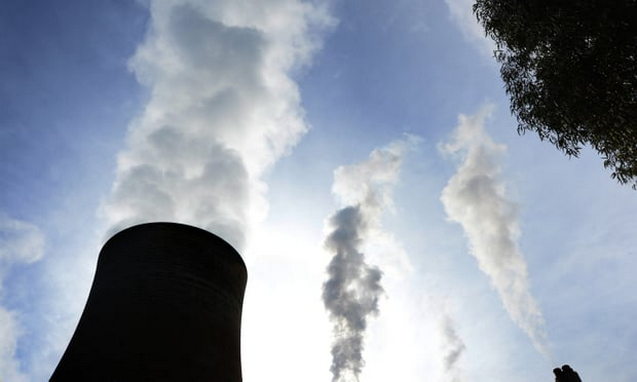The ACT government has become the first jurisdiction in Australia to join the United Nations-backed Powering Past Coal Alliance aimed at rapidly phasing out the fossil fuel considered a major contributor to climate change.
The move, announced at the Global Climate Action Summit in San Francisco overnight, came as almost 400 investors with $US32 trillion ($45 trillion) unveiled accelerated efforts to meet the Paris Climate Agreement goals to keep global temperatures from rising less than 2 degrees above pre-industrial levels.
 |
| Thai protesters gather near the government house to protest the construction of a coal-fired power plant in Bangkok earlier this year. Photo: AP |
Mr Rattenbury said his government had joined to cement its leadership, which includes achieving 100 per cent renewable electricity and reaching net-zero emissions by 2045. "[That's] two of the most ambitious climate targets in the world," he said.
He contrasted those plans with Prime Minister Scott Morrison's support for coal - such as bringing a lump of it into Parliament - and his recent snubbing of the Pacific Islands Forum in Nauru, where climate change was a major focus. Several Pacific island states are also alliance members.
Mr Morrison has downplayed the importance of curbing greenhouse gas emissions from the power sector, saying his government would instead focus on lowering electricity prices.
Cbus goes net-zero
Other Australian entities, including businesses and the cities of Sydney and Melbourne, were active at the San Francisco summit.
“Australian investors are not waiting for [the federal] government to sort itself out," Emma Herd, chief executive of the Investor Group on Climate Change, said. "They recognise that climate change is a global economic trend and are working with their global counterparts to get on with it.”
Cbus, a leading building and construction industry super fund, announced it had set a target for all its property holdings to be net-zero emissions by 2030.
The company, which holds property worth about $5 billion, would demand managers provide roadmaps by 2020 on how they will reach the emissions target.
“This is a commercial decision that reflects Cbus’ values as a responsible investor,” Kristian Fok, Cbus chief investment officer, said. “Cbus members build Australia’s cities and we will make sure that they are part of building a resilient climate future.”
Adani switch
Signs, though, that Australia is not turning its back on coal include Thursday's announcement by Adani that it had redesigned its rail plans in a bid to accelerate the development of its proposed giant Carmichael coal mine in Queensland's Galilee Basin.
The Indian company said it ditched plans to develop its own 388 kilometre-long rail line and would instead build a 200-km narrow gauge connection to an existing network.
"By connecting to the existing network, we can fast-track project delivery, reduce capital expenditure and deliver coal more quickly to countries in Asia with growing energy markets," Lucas Dow, chief executive of Adani Mining, said.
The railway could support annual output of 27.4 million tonnes of coal from the mine.
"It does dramatically reduce the capital requirement" for the railway, said Tim Buckley, an analyst with anti-coal group, the Institute for Energy Economics and Financial Analysis. "This will literally halve the cost."
Even so, the economics remain challenging for Adani, made worse of late by financial curbs being imposed on conglomerates by India's central bank, Mr Buckley said.
Links
- More than 20 Countries Launch Global Alliance to Phase Out Coal
- Global Climate Action Summit
- Surge in global business embracing climate science to navigate low-carbon transition
- 27 Cities Have Reached Peak Greenhouse Gas Emissions whilst Populations Increase and Economies Grow
- New collaboration of twenty-one companies is dedicated to accelerating climate action using the power of technology
- Global Climate Action Summit: Governments Must Aim for Net Zero Carbon Emissions Before 2050, Say Business Leaders



